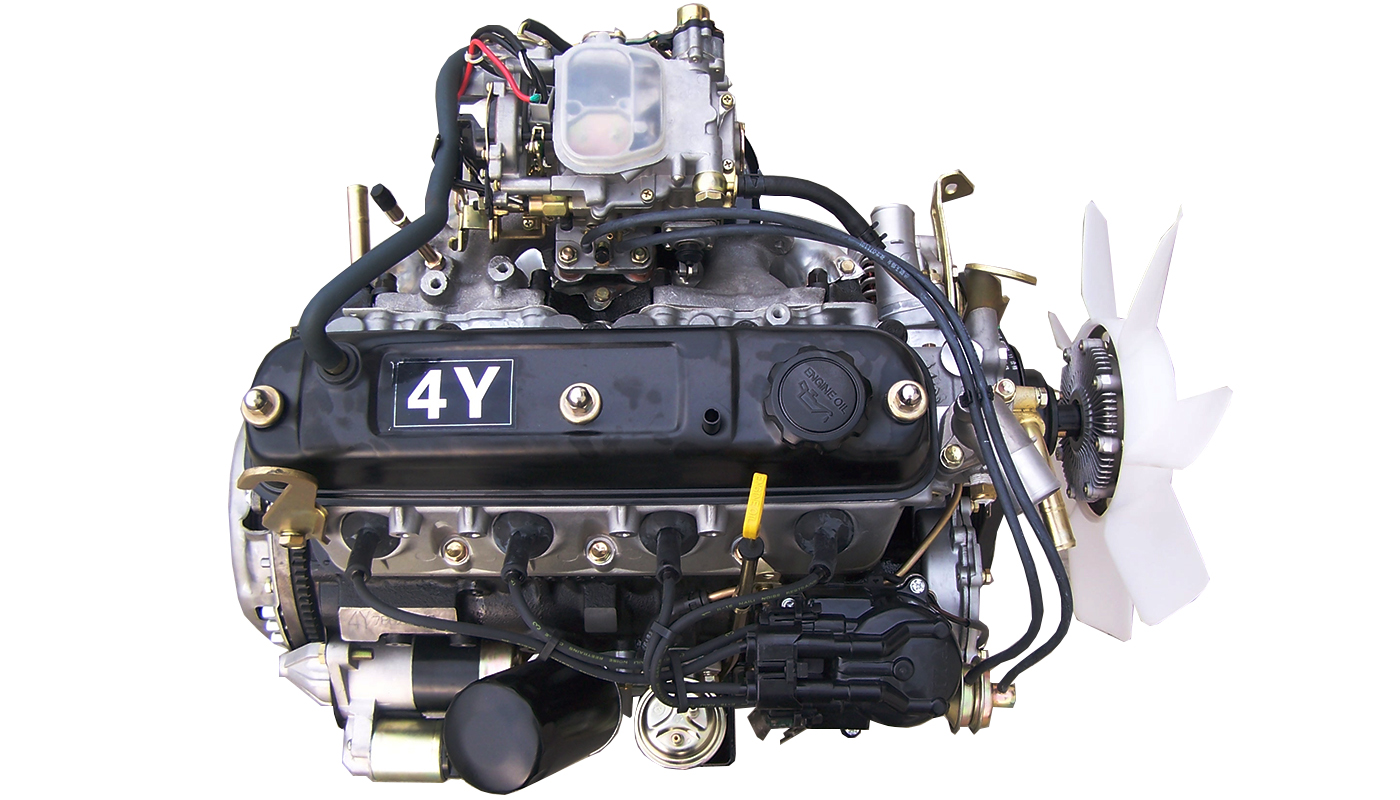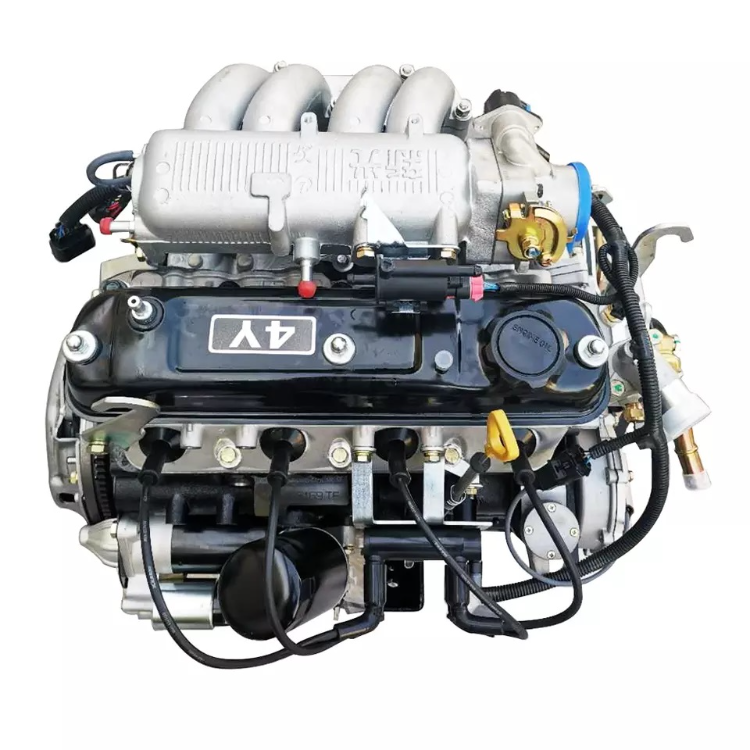The Advantages of Choosing a Vehicle Powered by the 4Y Engine
The Advantages of Choosing a Vehicle Powered by the 4Y Engine
Blog Article
Why the Engine Is the most effective Option for Performance and Effectiveness in Your Cars And Truck
The engine remains a critical element in auto layout, primarily due to its considerable impact on both performance and efficiency. As innovations in innovation make it possible for smaller engines to supply exceptional power while optimizing gas economic climate, the combination of attributes such as turbocharging and hybrid systems comes to be increasingly vital.
Recognizing Engine Kind
Comprehending the different sorts of engines is vital for maximizing efficiency and performance in auto design. The primary engine types include internal combustion engines (ICE), electric engines, and hybrid systems, each offering unique benefits and restrictions.
Interior combustion engines, which can be additional categorized into fuel and diesel versions, rely on the burning of gas to create power. Gas engines normally supply greater RPMs and far better velocity, while diesel engines are known for their torque and fuel efficiency, making them perfect for durable applications.
Electric engines, on the other hand, make use of electric motors powered by batteries or fuel cells. They provide instant torque delivery, causing smooth velocity and reduced emissions. The efficiency of electrical engines is significantly greater than that of ICEs, making them a preferred option for eco-conscious customers.
Crossbreed systems integrate both interior combustion and electrical engines, leveraging the toughness of both modern technologies. They maximize gas usage by making use of electrical power at lower speeds and changing to gas or diesel for greater rates or much heavier tons.
Selecting the right engine kind is vital for accomplishing wanted performance metrics and ecological sustainability in contemporary automotive design.
The Impact of Engine Size
Engine size often plays a crucial role in identifying a car's efficiency and performance. Generally measured in liters or cubic centimeters, engine size directly influences the power outcome and torque attributes of a lorry.
Nonetheless, increased engine size frequently correlates with decreased fuel effectiveness. Larger engines take in more fuel, resulting in higher discharges and functional expenses. As a result, makers have to stabilize the need for power with the demand for gas economy. Smaller sized engines can supply ample performance for daily driving while promoting much better efficiency, making them a popular selection in portable and mid-size cars.
Additionally, advancements in engine layout, such as turbocharging and direct gas shot, allow smaller sized engines to accomplish power levels equivalent to their larger counterparts. This pattern emphasizes the relevance of not exclusively focusing on engine dimension but additionally thinking about overall automobile design and modern technology (4y engine). Ultimately, the influence of engine size on efficiency and efficiency emphasizes the requirement for customers to evaluate their details driving requirements and choices when selecting an automobile
Advanced Engine Technologies
Advancements in engine modern technologies have substantially improved the landscape of automobile performance and performance, building upon the foundational ideas developed by engine dimension. Notably, developments such as turbocharging and straight gas shot have allowed smaller sized engines to supply power degrees previously associated with larger equivalents. Turbochargers press air getting in the engine, permitting boosted power output without a corresponding rise in engine size, while direct injection maximizes gas distribution, improving combustion performance.
In addition, variable valve timing systems have become a critical modern technology, permitting engines to adjust valve procedure based upon driving problems. This flexibility improves both efficiency throughout velocity and gas effectiveness during cruising. Hybrid and electric engine technologies further highlight the change in auto layout, integrating standard interior combustion engines with electric motors to optimize effectiveness while decreasing emissions.
Additionally, advancements in products scientific research have resulted in lighter, more durable engine elements, even more enhancing efficiency and long life. The integration of advanced electronic devices and engine control systems also enables real-time modifications, guaranteeing optimum efficiency across numerous conditions. Jointly, these sophisticated engine technologies not just improve lorry efficiency but additionally contribute to an extra sustainable automotive future, showing the ongoing advancement of engine style.
Harmonizing Power and Effectiveness
Striking an equilibrium between power and performance is vital in modern auto style as suppliers seek to fulfill increasingly rigorous discharges laws while satisfying customer demand for performance (4y engine). The obstacle lies in enhancing engine characteristics to provide durable power outcome without giving up fuel economic situation
To achieve this equilibrium, engineers utilize numerous techniques, such as turbocharging, which boosts engine power forcibly in even more air, enabling a smaller sized engine variation that improves fuel performance. Variable valve timing innovations additionally play a significant role, allowing engines to readjust their efficiency qualities based on driving problems, thereby improving both power and performance.
Furthermore, developments in products and making strategies have resulted in lighter engine elements, which minimize total lorry weight and improve fuel efficiency without jeopardizing power. Hybrid modern technologies have actually additionally emerged as a practical remedy, combining standard inner burning engines with electric powertrains to offer an increase in performance while preserving reduced exhausts.

Future Trends in Engine Layout

Furthermore, the growth of sophisticated products, such as high-strength alloys and lightweight compounds, is set to reinvent engine components. These materials not just decrease weight yet additionally improve thermal effectiveness, thereby enhancing efficiency. Additionally, makers are discover here exploring variable compression ratios, permitting engines to adapt to different driving problems, boosting both power output and gas economic situation.
Even more, the surge of expert system and maker learning in engine style is allowing anticipating upkeep and real-time performance optimization. This innovation can bring about engines that self-adjust for optimal efficiency based on driving patterns.

Conclusion
Finally, the engine functions as a crucial component in achieving optimal performance and effectiveness in contemporary automobiles. Advanced modern technologies, such as turbocharging and crossbreed systems, boost power result while minimizing fuel consumption and emissions. The interplay between engine dimension and layout remains to evolve, driving developments that balance exhilarating performance with environmental sustainability. As automobile engineering progresses, the focus on developing efficient, effective engines will certainly stay vital fit the future of transportation.
Furthermore, developments in engine design, such as turbocharging and straight gas injection, permit smaller sized engines to accomplish power degrees equivalent to their larger equivalents.Advancements in engine innovations have significantly improved the landscape of automobile performance and performance, building upon the fundamental ideas established by engine dimension. Turbochargers compress air getting in the engine, enabling for increased power outcome without a corresponding rise in engine size, while straight injection maximizes fuel distribution, improving burning effectiveness.
Crossbreed and electric engine modern technologies even more highlight the shift in auto design, incorporating conventional inner combustion engines with informative post electrical motors to take full advantage of efficiency while minimizing emissions.
Collectively, these sophisticated engine technologies not only boost vehicle efficiency yet likewise add to an extra sustainable vehicle future, showing the ongoing development of engine layout. (4y engine)
Report this page